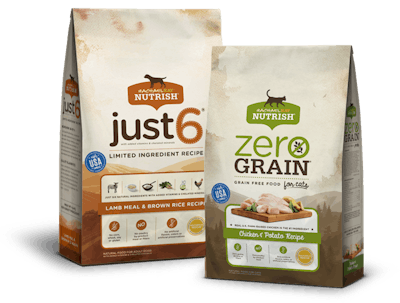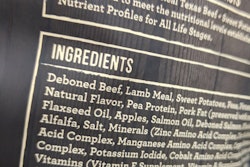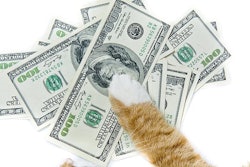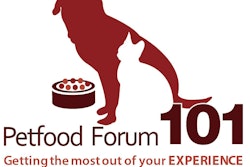
“I should have gone into pet food manufacturing — must be an interesting time for you and your industry!” That was the message I received from my sister, who works in finance with the non-profit sector, after J.M. Smucker announced it was acquiring Ainsworth Pet Nutrition.
Indeed, these are fascinating times, and the fact that the pet food industry, its companies and deals are attracting such interest and attention from people outside the industry further proves the strength and dynamism of our industry. (My sister’s text to me when the General Mills-Blue Buffalo deal was announced: “US$8 billion. That’s nine zeroes!”)
Pet food saving human food’s bacon?
I find it rather ironic that the two big acquisitions to date this year involve human food companies. It seems that, after a decade or so of pet food following human food trends in ingredients, product features and claims, human food companies are now looking to pet food to, well, save their bacon.
The reasons are fairly clear, especially the main one: the pet food market keeps growing, while human food is stagnant, at least in the categories that companies like General Mills and Smucker have traditionally focused on. “Pet food and pet snacks [have] become the largest center-of-the-store category in the US food and beverage market, generating over US$30 billion in annual retail sales across all channels, and remains one of the fastest-growing categories,” read the press release announcing the Smucker-Ainsworth deal. “This acquisition and the addition of the high-growth Nutrish brand will increase the scale and further accelerate the growth profile of the company’s [Smucker’s] pet food business.”
That last sentence, of course, refers to Smucker’s 2015 acquisition of Big Heart Pet Brands. While that pet food business has seemingly had its ups and downs since then (not to mention horror stories like the recent pentobarbital-related recalls), Smucker’s return has been positive overall, and the company definitely sees a strong future there. In fact, one of the more stunning aspects of this new acquisition is that it will now make pet food the largest category for Smucker, accounting for 28.9 percent of its business, just edging out consumer food at 28.2 percent, said Craig Giammona on Bloomberg.com.
“Smucker is coping with a consumer shift away from longstanding supermarket staples, a trend that contributed to a sales decline last year,” Giammona wrote. “In this tough environment for human fare, dog and cat food has been a bright spot — especially as Americans increasingly treat their animals like family members.”
As part of the acquisition press release, Smucker also announced that it is exploring the sale of its baking business, further cementing its move away from some human food categories.
Nutrish leads pet food’s move into ‘mass premium’
The main attraction of Smucker’s new pet food prize was the Rachael Ray Nutrish brand, which “holds a leading position and is one of the fastest-growing brands in the premium dry dog food segment within the grocery and mass channels, a key growth driver for the overall category,” the press release said, adding that having Nutrish in its portfolio will “significantly” expand Smucker’s position in the category and complement its Nature’s Recipe brand, which was part of the Big Heart acquisition. The Nutrish line also includes dog treats, another important category for Smucker and, as we know, another high-growth segment.
No doubt Smucker, along with many other industry watchers, took notice of how Nutrish led a movement, starting in 2008, to take the product and feature claims traditionally associated with premium and superpremium pet foods sold in the pet specialty channel and offer them at a price that mass market consumers could afford or were willing to pay. Nutrish launched in the mass market channel and, after enjoying unqualified success (48.6 percent compound annual growth), soon saw followers in brands such as Mars’ Nutro, Smucker’s/Big Heart’s Nature’s Recipe (both originally pet specialty only brands) and, just last year, Blue Buffalo’s Blue Life Protection Formula.
The result? In 2017, pet food’s growth in the US mass market channel outstripped that in US pet specialty for the first time in decades, according to Euromonitor. Both growth rates were still relatively small — just over 2 percent for mass versus about 1.5 percent for pet specialty — but the reversal in growth trends is still noteworthy and likely served as another factor in Ainsworth’s appeal to Smucker, as well as Blue Buffalo’s to General Mills.
Of course, pet food’s success in another channel — e-commerce — posed even more of an attraction to the human food companies. Blue Buffalo experienced double-digit percentage growth in online sales from 2016 to 2017, and Smucker sees the similar potential for its existing and new pet food brands. “Online sales currently only account for about 3 percent of Smucker’s business,” Giammona wrote. “But the category is growing fast: In the first three quarters of the current fiscal year, pet sales through e-commerce have surged 70 percent, according to the company.”
That’s a lot of pet food
As my sister’s text after the General Mills-Blue Buffalo deal alluded, the sheer size of these acquisitions is also grabbing attention. Blue Buffalo’s 2017 sales reached nearly US$1.3 billion, yet its recent rapid growth and potential for more fetched an acquisition price of US$8 billion, a 23 percent premium to Blue Buffalo’s 60-day volume weighted average price. (“That’s a LOT of pet food, my friend,” my sister texted.)
Ainsworth is smaller; the acquisition press release anticipates it to contribute US$800 million in sales in its first full year in the Smucker portfolio; and Euromonitor said 2017 sales for Nutrish (which accounts for roughly two-thirds of Ainsworth’s revenues) were about US$700 million. Yet the acquisition price was a cool US$1.7 billion net, after an estimated tax benefit of US$200 million, which amounts to 12 times EBIDTA after also factoring in cost synergies.
While a large sale was perhaps Blue Buffalo’s ultimate goal (at least over the last several years as it’s grown rapidly, conducted a public offering and expanded into more channels), Ainsworth has taken a somewhat different path to this point. It started out 85 years ago, in 1933, as a small company, Dad’s Pet Care, yet has grown from those humble roots with its partnership with the celebrity chef Ray, launch of that hugely successful brand and recent acquisitions of its own.
Whether all these moves were undertaken to eventually bring about an acquisition is impossible to say. Interestingly, Jeff Watters, Ainsworth’s president and CEO, was at one time a senior executive with Del Monte’s pet food business, before it became Big Heart Pet Brands, so perhaps a key relationship played a role in this deal.
No matter the circumstances here, I think it’s safe to say that the robust, ongoing growth of brands like Blue Buffalo’s and Ainsworth’s, along with the companies’ ability to parlay their success into other channels, will continue to attract the attention — and probably the dollars — of the human food industry. My hunch is that we will continue to see big acquisition announcements between pet food and human food players.

















